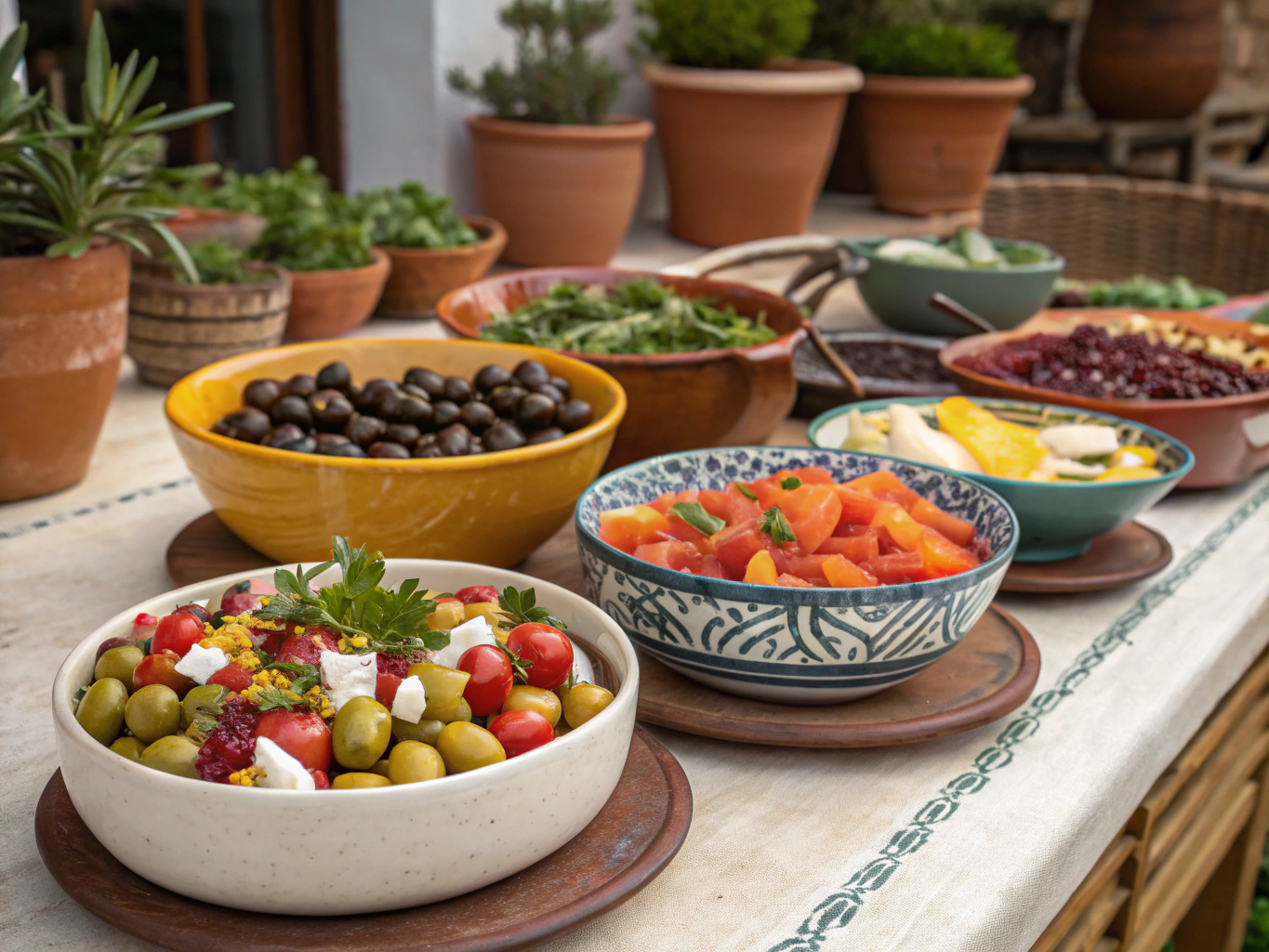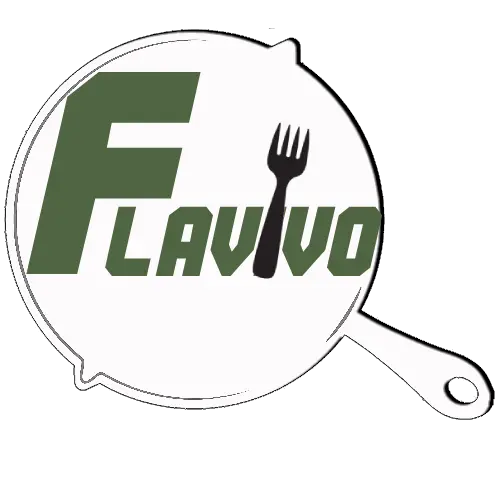
Mediterranean bowls are more than just a food trend—they’re a delicious, nutrient-packed celebration of color, culture, and comfort. These layered meals are packed with fresh vegetables, proteins, grains, herbs, and bold sauces that feel like a getaway to Greece or a family gathering in Beirut. In this article, we’ll journey through the flavors of the Mediterranean and show you how to build bowls that are both easy to prepare and hard to forget. You’ll find recipes, nutritional benefits, prep tips, and answers to your most-asked questions.
Inspired Beginnings: My Love for Bold, Balanced Bowls
Stirring Memories in Grandmother’s Kitchen
My fascination with Mediterranean bowls started the same way most of my culinary love affairs began—next to my grandmother in her Charleston kitchen. Though we weren’t Mediterranean, she had an uncanny knack for combining bold herbs with raw vegetables, roasted meats, and vinegary dressings that mimicked Mediterranean flavors. I remember one summer afternoon when we whipped up a chickpea salad with garlic, lemon, and parsley—ingredients that have since become my anchors. That afternoon, redolent with mint and toasted cumin, now lives on in every bowl I make.
These Mediterranean bowls became my signature at local farmers’ markets, where people would ask how I got so much flavor into something that looked so humble. It’s the contrast, I’d explain—the crunch of cucumbers against soft farro, the zing of vinaigrette over silky hummus. And most importantly, it’s about honoring each layer with attention and love. Whether I’m crafting a bowl for a busy lunch or plating them for guests at a dinner party, I never forget that first spark of flavor fusion.
Why Mediterranean Bowls Are the Perfect Canvas
Mediterranean bowls offer a perfect playground for experimentation. Want a base of quinoa instead of bulgur? Go for it. Craving lamb over chickpeas? Make the swap. Combining centuries-old staples like tahini or sumac with everyday pantry items, you can build deeply satisfying meals in under 30 minutes. Because they’re built layer by layer, even beginner cooks can explore new ingredients like harissa or preserved lemon without feeling overwhelmed.
At FlavivoRecipes, I’ve shown readers how Mediterranean-style bowls can adapt to vegan diets, ketogenic lifestyles, or lean meal preps. And the best part? These bowls rarely need fancy equipment. A good knife, a baking tray, and a blender are your best allies on the journey. These adaptable, flavor-packed meals represent everything that makes cooking joyful—comfort, creativity, and connection.
Ingredients, Timing, and Step-by-Step How-To for a Classic Mediterranean Bowl
The Essential Mediterranean Bowl Recipe
Ready to create your own bowl of sun-drenched goodness? Here’s a classic Mediterranean bowl recipe filled with vibrant color, deep flavor, and nourishing ingredients.
| Ingredient | Description / Optional Substitutes |
|---|---|
| Cooked quinoa or farro | 1 cup, base grain—can sub bulgur, couscous, or rice |
| Chickpeas | ½ cup, cooked or canned—can sub white beans or lentils |
| Cucumbers | ½ cup, diced—adds crunch and freshness |
| Cherry tomatoes | ½ cup, halved—can sub roasted red pepper or sun-dried tomatoes |
| Hummus | 2 tablespoons—any flavor works (garlic, beet, plain) |
| Feta cheese | 2 tablespoons—omit or replace with vegan feta if preferred |
| Olives | Sliced Kalamata, adjust to taste |
| Lemon-tahini dressing | Drizzle of choice—look for clean olive oil bases |
Timing: Prep & Cook Like a Pro
Here’s how the Mediterranean bowl comes together:
- Prep Time: 15 minutes
- Cook Time: 10 minutes (for grains or roasted veggies if used)
- Total Time: 25 minutes
In under half an hour, you’ll have a balanced meal rich in fiber, protein, and satisfying fats—making it a brilliant weekday option that’s faster than ordering in.
Step-by-Step Instructions
- Cook your grains. Quinoa or farro will take about 10 minutes. Make extras for the week!
- While the grains cook, chop cucumbers, tomatoes, and olives.
- Warm or rinse chickpeas, season with salt, a pinch of cumin, and olive oil.
- Whip up your lemon-tahini dressing: tahini, lemon juice, olive oil, garlic, salt.
- Assemble: Start with grains, then add chickpeas, veggies, dollops of hummus, feta, and olives.
- Drizzle with dressing and garnish with fresh parsley or mint.
This bowl can easily adapt for meal prep. Just pack the wet components (dressing, tomatoes) separately and combine before serving. For more prep-friendly recipes, check out meal-prep bowl recipes to keep your week fresh and flavorful.
Why Mediterranean Bowls Are as Healthy as They Are Delicious
Nutritional Value Worth Celebrating
Mediterranean bowls aren’t just tasty—they’re backed by research. According to Harvard’s School of Public Health, the Mediterranean diet is linked to reduced risk of heart disease, stroke, and type 2 diabetes. By filling your bowl with Mediterranean staples like olive oil, legumes, leafy greens, and whole grains, you support digestion, heart health, and energy regulation.
These bowls often include anti-inflammatory ingredients like garlic, turmeric, and extra virgin olive oil, which makes them suitable for clean eating or anti-inflammatory diets. Incorporate herbs like dill and oregano not just for flavor, but also for their antimicrobial benefits.
Oils to Use for Flavor and Health
Wondering what oils to drizzle onto your Mediterranean bowl? Here are great options:
- Extra virgin olive oil (cold-pressed): heart-healthy, enhances flavor
- Avocado oil: a neutral, clean-burning alternative for high-heat cooking
- Walnut oil: great for finishing touch; rich in omega-3s
Avoid heavily refined vegetable oils and instead choose cold-pressed varieties. You can find dishes on our blog that highlight these healthy fats like our roasted veggie grain bowls or fresh vinaigrette-enhanced salads.
How to Customize Mediterranean Bowls to Suit Your Taste
Switch It Up with Global Twists
Mediterranean bowls are endlessly customizable. Want a Moroccan twist? Add harissa, cinnamon-spiced carrots, and preserved lemon. Craving Greek flavors? Opt for tzatziki, dill, and grilled chicken. Even Italian flair works—try capers, balsamic glaze, and sundried tomatoes. These bowls flex with your pantry and mood.
Use familiar pantry staples to introduce new flavors: sumac for citrus brightness or smoked paprika for depth. If you’re out of greens, shredded cabbage or roasted broccoli makes a fine substitute. And let textures guide you—add nuts, toasted pita or falafel for satisfying crunch.
Meal Prep vs. Freshly Assembled
Mediterranean bowls thrive both as meal prep and just-in-time assembly. Keep containers of chessboard ingredients—diced tomatoes, seasoned chickpeas, grain portions—ready in the fridge. At dinnertime, scoop, drizzle, and enjoy. Or build multiple bowls “buffet style” so even the pickiest family member can assemble their dream meal.
Check our family-friendly Mediterranean recipes designed for both structure and spontaneity. Whether prepped ahead or whipped up in 10 minutes flat, these bowls are your answer to fast, flavorful nourishment.
FAQ: Mediterranean Bowls
What goes on a Mediterranean bowl?
A Mediterranean bowl typically includes a grain base (like farro or couscous), a protein (such as chickpeas or chicken), fresh produce (like cucumbers, tomatoes, olives), a creamy element (like hummus or tzatziki), and a hearty drizzle of olive oil-based dressing.
Are Mediterranean bowls healthy?
Yes, they’re incredibly healthy! Mediterranean bowls align with the Mediterranean diet, which research links to better heart health, stable energy, and reduced inflammation. They’re naturally rich in fiber, lean protein, healthy fats, and antioxidants.
What are some classic Mediterranean dishes?
Classic Mediterranean dishes that inspire components of the bowl include tabbouleh, baba ghanoush, falafel, Greek salad, and souvlaki. These classics provide flavor profiles and textures that work perfectly in a bowl format.
What are the best oils to use in a Mediterranean bowl?
Extra virgin olive oil is the gold standard due to its health benefits and robust flavor. Other good options include avocado oil for neutral cooking, and walnut oil for a nutty finish.
Conclusion
Mediterranean bowls aren’t just a meal; they’re a moment of joy. They tell stories, honor cultures, and make everyday ingredients into something beautiful. You can use what you have, trust your instincts, and build bowls that are uniquely yours. Whether you came here looking for a quick lunch or ideas to spice up your dinner rotation, I hope you found inspiration that sticks.
As someone who once learned how to cook without measuring cups, I promise you this—flavor comes first, and with Mediterranean bowls, you’ll never go wrong experimenting with bold herbs, bright dressings, and layers of real food. So dive in, get messy, and let your next meal taste like a well-earned escape.
